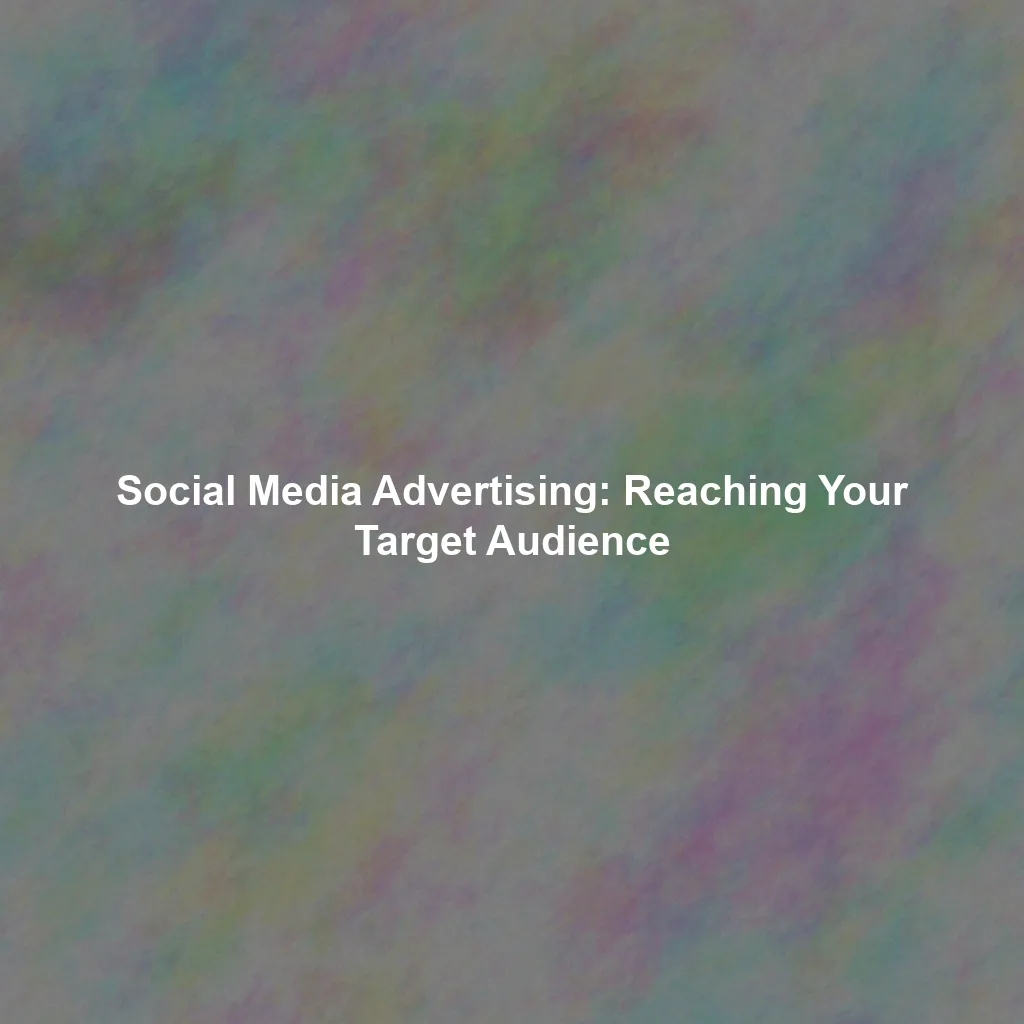Understanding the Power of Targeted Social Media Advertising
The beauty of social media advertising lies in its unparalleled targeting capabilities. Unlike traditional advertising methods, social platforms allow you to pinpoint your audience based on a wealth of data, including:
- Demographics: Age, gender, location, education level, and more.
- Interests: Hobbies, passions, and topics they follow.
- Behaviors: Online activity, purchase history, and engagement patterns.
- Connections: People they know, groups they belong to, and pages they follow.
- Custom Audiences: Upload your existing customer lists (email addresses, phone numbers) to target them directly or create “lookalike” audiences based on their characteristics.
By leveraging these targeting options, you can ensure your ads are seen by the people most likely to be interested in your products or services, maximizing your ROI and minimizing wasted ad spend.
Exploring Key Social Media Advertising Platforms
Facebook & Instagram Advertising (Meta Ads)
Meta Ads Manager is the powerhouse for advertising on both Facebook and Instagram. With a massive user base and sophisticated targeting options, it’s a must-consider platform for most businesses.
- Strengths: Wide reach, detailed targeting, various ad formats (image, video, carousel, collection), and robust analytics.
- Considerations: Can be competitive, requiring careful ad creative and targeting optimization.
- Ad Types: Image ads, video ads, carousel ads, collection ads, lead generation ads, instant experience ads.
LinkedIn Advertising
LinkedIn is the go-to platform for B2B marketing. It allows you to target professionals based on their job title, industry, company size, skills, and more.
- Strengths: Highly targeted for B2B audiences, excellent for lead generation and brand awareness within specific industries.
- Considerations: Can be more expensive than other platforms, best suited for professional services and B2B products.
- Ad Types: Sponsored Content, Text Ads, Sponsored InMail, Dynamic Ads.
Twitter Advertising (X Ads)
Twitter (now X) is a great platform for reaching audiences interested in real-time news, trends, and conversations. It’s particularly effective for driving website traffic and promoting events.
- Strengths: Real-time targeting, trend-based targeting, good for driving website traffic and brand awareness.
- Considerations: Shorter attention spans, requires engaging and concise ad copy.
- Ad Types: Promoted Tweets, Promoted Accounts, Promoted Trends.
TikTok Advertising
TikTok is a rapidly growing platform, especially popular among younger audiences (Gen Z and Millennials). It’s ideal for creating engaging video content and building brand awareness.
- Strengths: High engagement rates, viral potential, effective for reaching younger demographics.
- Considerations: Requires creative and authentic video content, may not be suitable for all industries.
- Ad Types: In-Feed Ads, Brand Takeovers, TopView Ads, Branded Hashtag Challenges, Brand Effects.
Pinterest Advertising
Pinterest is a visual discovery platform where users find inspiration for various projects and interests. It’s a great platform for businesses in the home décor, fashion, food, and DIY industries.
- Strengths: Highly visual, strong purchase intent, effective for driving traffic to e-commerce websites.
- Considerations: Requires high-quality images and videos, targeting options are less granular than on some other platforms.
- Ad Types: Promoted Pins, Promoted Video Pins, Carousel Ads, Collection Ads.
Creating Targeted Ads That Convert
Once you’ve chosen your platform(s), the next step is creating ads that resonate with your target audience. Here are some key strategies:
- Know Your Audience: Conduct thorough research to understand their needs, pain points, and motivations.
- Craft Compelling Ad Copy: Use clear, concise, and persuasive language that highlights the benefits of your product or service.
- Use High-Quality Visuals: Choose eye-catching images and videos that capture attention and convey your message effectively.
- A/B Test Your Ads: Experiment with different headlines, images, and targeting options to optimize your ad performance.
- Include a Clear Call to Action: Tell users exactly what you want them to do (e.g., “Shop Now,” “Learn More,” “Sign Up”).
- Track Your Results: Monitor your ad performance closely and make adjustments as needed to improve your ROI.
- Use Retargeting: Show ads to people who have previously interacted with your website or social media pages to bring them back and encourage conversions.
Measuring Success and Optimizing Your Campaigns
The final piece of the puzzle is tracking your results and making adjustments to improve your campaign performance. Key metrics to monitor include:
- Impressions: The number of times your ad was shown.
- Reach: The number of unique people who saw your ad.
- Click-Through Rate (CTR): The percentage of people who clicked on your ad.
- Conversion Rate: The percentage of people who completed a desired action (e.g., purchase, sign-up) after clicking on your ad.
- Cost Per Click (CPC): The amount you pay each time someone clicks on your ad.
- Return on Ad Spend (ROAS): The amount of revenue you generate for every dollar you spend on advertising.
By analyzing these metrics, you can identify what’s working and what’s not, and make data-driven decisions to optimize your campaigns and achieve your marketing goals.
Conclusion
Social media advertising offers unparalleled opportunities to reach your target audience and drive business growth. By understanding the different platforms, leveraging their targeting options, and creating compelling ads, you can unlock the power of social media and achieve remarkable results. Remember to continuously monitor your performance, test new strategies, and adapt to the ever-changing landscape of social media. Embrace the data, be creative, and watch your business thrive.
 Skip to content
Skip to content

